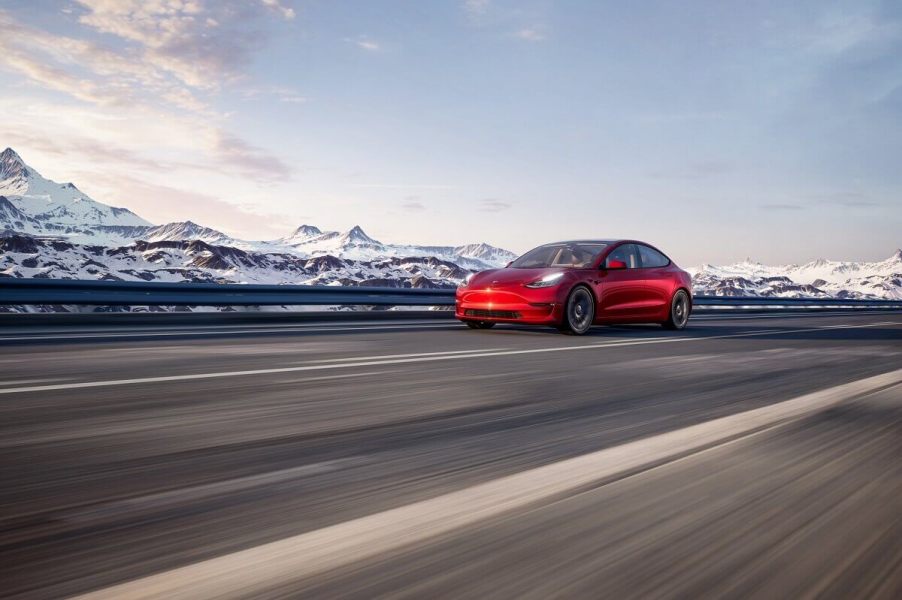
Can You Drive a Tesla Model 3 in the Snow?
The Tesla Model 3 is the most affordable electric vehicle (EV) option in the automaker’s lineup. However, it doesn’t mean that the Tesla Model 3 or its upper trims, like the Performance and Long Range, are a compromise in poor weather like snow. Even enthusiasts in challenging climates can enjoy the Tesla EV due to its safety scores and all-wheel drive (AWD) at upper trims. Still, can you drive it in the snow, or should you stick to a truck or SUV?
Is an AWD Model 3 good in the snow?
Two trims in the Model 3’s lineup pack dual-motor AWD as standard equipment. As a result, the Model 3 Performance and Long Range trims send power to all four tires, multiplying grip compared to the rear-wheel drive (RWD) application. That added grip makes the AWD Model 3 variants much better in the snow.

That’s not to say the standard Rear-Wheel Drive trim can’t conduct itself in inclement weather. However, RWD applications are famously tail-happy on slippery surfaces, and the Model 3’s power and torque reserves could induce a loss of traction. Still, with winter or snow tires, a Model 3 Rear-Wheel Drive could mind its manners in the snow.
Is AWD necessary in Tesla Model 3?
AWD is not necessary for a Tesla Model 3 but could make your EV much more compliant in rain, snow, and icy conditions. However, the AWD Performance and Long Range trims push the starting price of the baby Tesla much higher than the entry-level trim’s $44,630.
However, for enthusiasts who want the extra grip, power, and range, the pricier Tesla Model 3 Long Range and Performance trims start at around $53,130 and $55,630, respectively. Car and Driver recommends the Long Range trim due to its balance of impressive range (358 miles) and snappy acceleration.
Does Tesla 3 need winter tires?
While the Tesla Model 3 doesn’t need winter or snow tires, weather-appropriate tires will multiply grip and contribute to overall safety. Still, with top safety ratings from the Insurance Institute for Highway Safety (IIHS) and National Highway Traffic Safety Administration (NHTSA), the Model 3 is among the safest EVs.
Moreover, owners who want Tesla-approved tires for cold weather can opt for a “Wheel and Winter” package. Tesla says the tires perform best at temperatures under 45 degrees Fahrenheit. Tesla also recommends and sells snow chains for determined drivers in challenging climates.
Do Teslas run well in cold weather?
Teslas like the Model 3 run well in cold weather, but they tend to lose capacity and range in frigid temperatures. For instance, data from AAA shows that EVs could lose as much as 41% of their range in freezing temperatures. Commuters will have to take that loss into consideration.

Should you drive your Tesla in the snow?
In short, if you can avoid driving in the snow and ice, you should. However, many vehicle owners don’t have the luxury of avoiding a commute through the snow, so driving with care is the name of the game. Equip your Tesla with seasonally-appropriate tires, turn off unnecessary accessories, mind your decreased range, and drive carefully.
Do you drive your Tesla in the snow? Tell us about it in the comments below!



